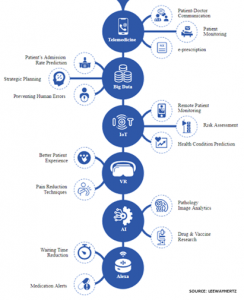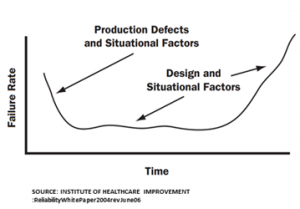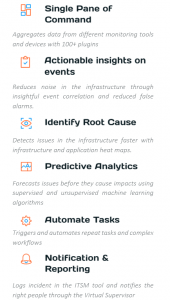
Empowering Digital Healthcare Transformation with ZIF


The healthcare industry is one of the biggest revenue generation sectors for the economy. In 2020, the healthcare industry generated close to $2.5 trillion dollars in the US. This has been made possible due to multiple revenue generation streams that encompass the development and commercialization of products and services that aid in maintaining and restoring health.
The modern healthcare industry has three essential sectors – services, products, and finance, which in turn can be further branched to various interdisciplinary groups of professionals that meet the health needs of their respective customers.
For any industry to scale and cover more customers, being digital is the best solution. Stepping into the digital space brings various tools and functionalities that can improve the effectivity and efficiency of the products and services offered in the Healthcare Industry.
The key component of any Digital Healthcare Transformation is it’s Patient-Focused Healthcare Approach. The transformation must aid healthcare providers in better streamlining the operations, understanding what the patients need and in turn build loyalty, trust and a stellar user experience.
Healthcare Transformation Trends
Innovation is the foundation for all Transformation initiatives. The vision of rationalizing work, optimizing systems, improving delivery results, eliminating human error, reducing costs, and improving the overall customer experiences are the levers that churn the wheel. With the advent of VR, wearable medical devices, telemedicine, and 5G using AI-enabled systems have significantly changed the traditional way that consumers use healthcare products and services.

The industry has shifted its focus in making intelligent and scalable systems that can process complex functionalities as well as deliver customer experience at its finest. With the integration of AI and omnichannel platforms, organizations can better understand their customers, address service and product gaps to better capitalize the market to achieve higher growth. Hence, transformation is the key to pushing forward in unprecedented and unpredictable times in order to achieve organizational vision and goals.
The healthcare industry is a very sensitive sector that requires careful attention to its customers. A mishap in the service can result in a life-and-death situation. Healthcare organizations aim to learn lessons from failures and incidents to make sure that they never happen again.
Maintaining and ensuring safe, efficient, and effective systems is the foundation for creating reliable systems in the Healthcare industry. Hence, innovation and transformation disrupt the existing process ecosystems and evolve them to bring in more value.
The challenge that organizations face is in their implementation and value realization with respect to cost savings, productivity enhancements, and overall revenue. The prime aspect of system reliability signifies the level of performance over time. When we consider healthcare, looking at defects alone does not differentiate reliability from the functional quality of the system. Reliability should be measured to its failure-free operation over time. Systems should be designed and implemented to focus on failure-free operation.
Measuring system operations over time can be depicted as a bathtub curve. While measuring performance, initial failure tends to arise from defects and situational factors. Eventually, the efficiency improves, and the curve flattens out to depict useful life until the wear-out phase starts from design and other situational factors.

While understanding the bathtub curve of system operations over time, we can infer that system design majorly contributes to the initial defects and system longevity. Hence, organizations must strive to build systems that can last a tenure from which the invested capital can be gained back, and the additional returns can be used for its future modernization goals.
Towards the end of the day, system reliability revolves around the following factors:
Reliability and Stability should seriously be considered whenever healthcare systems are being implemented. This is because the industry is facing quality-related challenges. Healthcare organizations are not delivering safe, reliable, and proof-based care. Thus, it is important for professionals to be empowered with tools and modern-day functionalities that would reduce the error and risk involved in their service delivery. These modern-day tools’ reliability must be sacrosanct to ensure that stellar customer experience and patient care are given.
Organizations purely focused on cost savings as a standalone goal can lead to unpredictable outcomes. It is imperative that an organization realize robust and reliability-centered processes that define clears roles and accountability to its employees, in order to have a sustainable form of operation.
When all these factors come together, the value realizations for the organization as well as its customer base are immense. These systems can contribute towards better ROI, improved profitability, enhanced competitive advantage, and an evolved customer brand perception.

Ever since the pandemic hit, healthcare organizations have concentrated towards remote patient health monitoring, telemedicine, and operations to expedite vaccine deliveries. These healthcare organizations have invested heavily in systems that connect all the data required for day-to-day operations into one place for consolidated analysis and decision making.
For the effective functioning of these consolidated systems, each of the devices that are connected to the main system needs to be functioning to its optimal capacity. If there is a deviation in device performance and the root cause is not identified promptly, this can have adverse effects on the service delivery as well as the patient’s health.
These incidents can be addressed with ZIFTM’s OEM Device monitoring capabilities. ZIFTM can be used to provide a visual dashboard of all operational devices and monitor their health to set thresholds for maintenance, incident detection, and problem resolutions. The integration can also create a consolidated view for all logs and vital data that can be later used for processing to give predictive information for actionable insights. The end goal that ZIFTM aims to achieve here is to pivot organizations towards a proactive approach to servicing and support for the devices that are operational. This connectivity and monitoring of devices across their portfolio can substantially bring in measurable changes in its cost savings, service efficiency, and effectivity.
With healthcare systems and digital services expanding across different organizations, predicting their reliability, efficiency and effectivity are important. When we look at reliability prediction, the core function is to evaluate systems and predict or estimate their failure rate.
In the current scenario, organizations are performing reliability and prediction analysis manually. Each of the resources analyzes the system to its component level and monitors its performance. This process has a high susceptibility to manual errors and data discrepancies. With ZIFTM, the integrated systems can be analyzed and modeled based on various characteristics that contribute to its systemic operation and failure. ZIFTM analyzes the system down to its component level to model and estimates each of its parameters that contribute to the system’s reliability.
Players in the Healthcare Industry must understand that Digital Transformation is the way forward to keep up with the emerging trends and tend to its growing customer needs. The challenge comes in selecting the right technology that is worth investing and reaping its benefits within the expected time period.
As healthcare service empowerment leaders in the industry, GAVS is committed to align with our healthcare customers’ goals and bring in customized solutions that help them attain their vision. When it comes to supporting reliable systems and making them self-resilient, the ZIF can bring in measurable value realizations upon its implementation.
ZIFTM is an AIOps platform that is crafted for predictive and autonomous IT operations that support day-to-day business processes. Our flagship AIOps platform empowers businesses to Discover, Monitor, Analyze, Predict and Remediate threats and incidents faced during operations. ZIFTM is one unified platform that can transform IT operations that ensure service assurance and reliability.
ZIFTM transforms how organizations view and handle incidents. IT war rooms become more proactive when it comes to fire fighting. Upon implementation, customers can get end-to-end visibility of enterprise applications and infrastructure dependencies to better understand areas needing optimization and monitoring. The Low code/No code implementation with various avenues for integration, provides our customers a unified and real-time view of on-premise and cloud layers of their application systems. This enables and empowers them to track performance, reduce incidents and improve the overall MTTR for service request and application incidents.

Experience and Explore the power of AI led Automation that can empower and ensure System Reliability and Resilience.
Schedule a Demo today and let us show you how ZIFTM can transform your business ecosystem.

“Ashish Joseph is a Lead Consultant at GAVS working for a healthcare client in the Product Management space. His areas of expertise lie in branding and outbound product management.“
Please complete the form details and a customer success representative will reach out to you shortly to schedule the demo. Thanks for your interest in ZIF!
Notifications